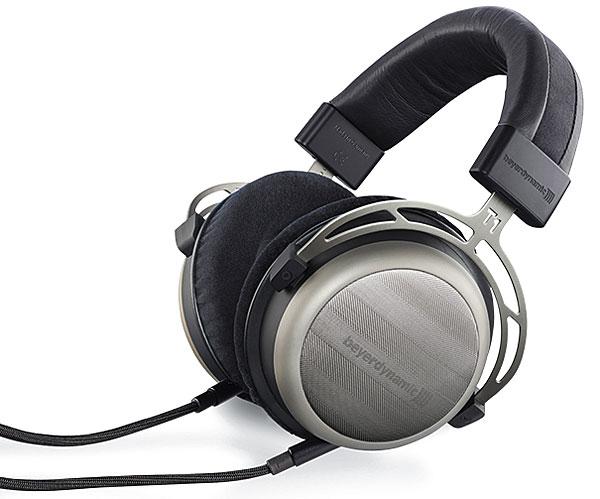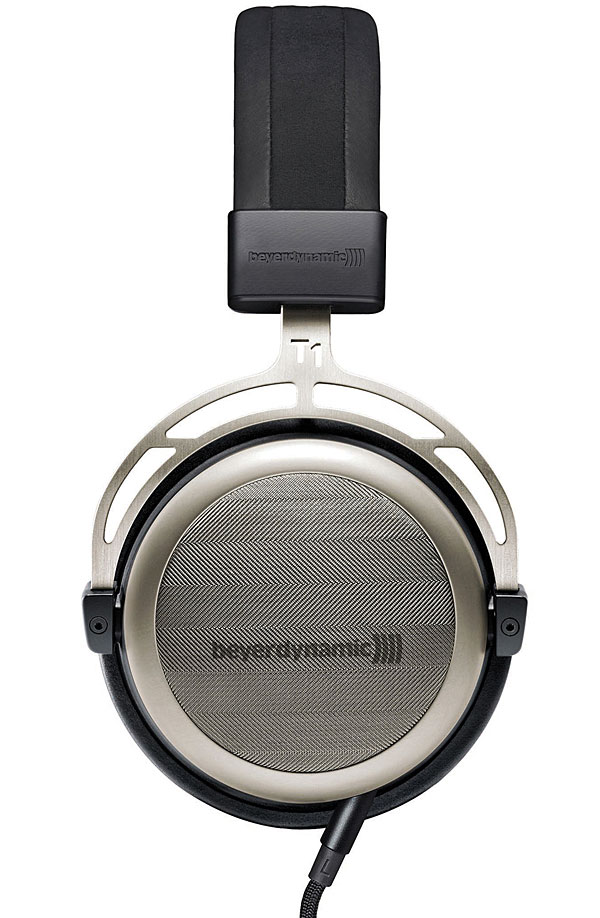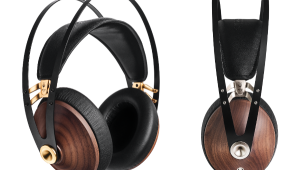Beyerdynamic T1 Headphone Review

AT A GLANCE
Plus
Concise, clear sound
Five-year warranty
Minus
High-impedance design limits portable use
THE VERDICT
Beyerdynamic reboots and refines their flagship T1—and significantly improves its sound quality.
The Beyerdynamic T1 (2nd Generation) over-the-ear headphone may look nearly identical to the original T1 that debuted in 2009, but trust me on this: The two headphones sound very different. The first thing I noticed is that the new T1 has meatier, bigger, punchier bass, and the treble is sweeter, clearer, and more refined. It’s much more than a reboot.
To discover why, I rang Beyerdynamic’s Klaus Hanselmann to get the back story. He told me the T1’s 45mm Tesla driver is much the same but now features a tiny plug that controls high-frequency resonance. The earcups sport an all-new aluminum driver housing and baffle. The acoustic damping material behind the drivers is also new. The ear pads now have memory foam, and they are covered with synthetic fibers that wick sweat away from your ears, so the T1 feels cooler in the summer.
Where the original headphone had permanently affixed cables, the new T1 sports user-replaceable cables, with conductors made from ultra-pure OCC copper; there’s also an optional balanced cable with a four-pin XLR connector. The T1, designed and made in Germany, comes with a handsome carry case and a five-year warranty, which is considerably longer coverage than what most manufacturers offer.
I recently got hooked on Ryan Adams’ sprawling, multi-volume album Live After Deaf concert series. Adams, armed with just an acoustic guitar (or piano) and harmonica, spills his guts all over the stage. The emotionally naked performances are striking, and their perspective (direct from microphone to eardrums) is addictive over the T1.

With acid jazz pioneers us3’s debut Hand on the Torch CD, the supple bass lines coursing through “Cruisin’” were more viscerally felt over the new T1. The old model is no slouch, but the newfound low-end gusto ups the ante. After an hour or so, I started to wish the headband had a bit more padding. But everyone’s head shape and size are different, so you might find the T1 more comfy than I did.
The old and new T1s are high-impedance (600-ohm) designs, so they won’t sound their best with smartphones and run-of-the-mill port- able devices. Even so, I had good results with Chord’s mighty little Mojo USB digital converter/headphone amp. At home, the solid-state Oppo HA-1 amp was a good match. My old reliable NAD C316BEE stereo integrated amp was just a few notches down in fully exploiting the T1’s ultimate potential, but it still wasn’t at all bad. The magic really happened, though, when I paired the T1 with my Woo Audio WA6SE all-tube headphone amp. Its sweetened tonality made everything go down easy. The imaging opened wide, and bass heft filled out. As with all the best headphones, the T1’s character changes with each amp; they clue you in to sound in ways that lesser ’phones gloss over.
Back with the Oppo HA-1 amp, I compared the T1 with my Audeze LCD-2 Fazor headphones, and it was clear from the get-go they were quite different. The Audeze open-back headphones presented a bigger, more spacious sound; bass went deeper, and there was more treble detail. On the other hand, the T1 is much lighter and more comfortable, and it felt more concise and focused, with a more accurate midrange tonal balance than the LCD-2 Fazor. They’re both excellent yet very different-sounding headphones.
With the new T1, Beyerdynamic’s engineers made all the right choices and in nearly every way made the T1 better than the original. Long live the T1!
Specs
Type: Semi-open, over-the-ear
Driver Size: 45mm
Impedance: 600 ohms
Sensitivity: 102 dB @ 1mW
Weight (Ounces): 12.7
- Log in or register to post comments























































